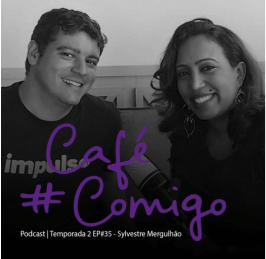
Karine Silveira
Co-founder of Impulso
Which are the performance issues of your team?
The Five Dysfunctions of a Team is a book that describes the pitfalls that several teams face in their formation and development. This book was written by consultant and speaker Patrick Lencioni and explores causes that he considers fundamental to a team's failure.
You can prevent all of this from happening in your team. The first step to addressing these issues is to understand that there are five dysfunctions and how each of them should be treated separately.
1Absence of Trust
The root cause of lack of trust arises when team members don't find space to show their weaknesses and be vulnerable and open with each other. Lack of trust leads to significant loss of time and energy, as team members end up resorting to defensive behaviors and take a long time to ask for help or assist each other.
Teams can overcome this dysfunction by sharing experiences, demonstrating credibility, and developing a strong appreciation for the unique characteristics of each team member.
2Fear of Conflict
Following the absence of trust, if this team fails to address the first dysfunction, it won't be able to engage in productive debates about important matters. Team members will avoid conflict, creating artificial harmony. This establishes a work environment where team members do not openly express their opinions, resulting in lower-quality outcomes and decisions.
One effective way to resolve this is by appointing a 'devil's advocate' for the meeting. Let one person find faults in any suggestion, while also encouraging other team members to defend their viewpoints.
Write down all the pros and cons pointed out in a shared document. This will demonstrate to your team that expressing opposing ideas is highly beneficial for the project's outcome. It also helps in training the team's critical thinking to identify flaws and blind spots in the presented ideas.
3Lack of Commitment
Following the fear of conflict, if this team can't resolve the second dysfunction, it won't be easy for team members to commit to and accept decisions. Productive teams make decisions together and transparently. And this can only happen when they are confident that they have the support of each team member. To achieve this, it is not necessary to seek consensus, but rather to ensure that everyone's voice is heard.
There are several strategies that can help overcome this team dysfunction. First, create a rule to summarize all the important decisions made during a meeting and also document all the reasons that were used to arrive at those decisions. Set clear deadlines not only for actions but also for decisions. This way, team members can take responsibility for reaching the best possible decision and commit to it, rather than simply postponing the solution.
4Avoidance of Accountability
Following the lack of commitment, if this team can't address the third dysfunction, it is very challenging for people to take responsibility. In a well-functioning team, each team member takes ownership of their deliverables, reminds colleagues of their responsibilities, and accepts accountability when necessary.
You can resolve this dysfunction by measuring progress clearly, conducting regular assessments, and rewarding team achievements instead of individual accomplishments.
5Inattention to Results
Following the avoidance of accountability, if this team can't address the fourth dysfunction, it won't be able to prioritize team results. When individuals are not held accountable, team members naturally tend to focus on their own interests instead of the team's interests.
To keep your team focused on common results, it is vital to have clear metrics for evaluating outcomes. If the team already knows how to maintain mutual accountability, they will strive for common goals rather than individual ones. As with avoiding accountability, rewards should be based on the team's performance, not individual results and achievements.
Are your teams becoming more productive over time?
When examining the history of accomplished teams, a clear correlation emerges between their achievements and the dynamics of their interpersonal relationships. According to group development theory, this dynamics plays an important role in guiding and engaging team members.
The objective of the Tuckman Model, when it was created, was to help project leaders understand how people in their team were building their relationships together. The model gained notoriety for its attention to how a team can achieve maximum productivity.
In the study to create the model, it found that people perform tasks differently depending on the quality of the relationships they have with members of their team. The theory highlights some direct reasons why some teams reach a peak of productivity and others do not.

Characteristics
The first stage is characterized by the team’s formation and the establishment of its objectives. It is here that group formation occurs, and the leader presents the project's purpose and shares goals, tasks, and approaches to the work.
Behaviors
Behaviors observed during the Formation stage may include many questions from team members. This behavior shows both the enthusiasm of the new team and the uncertainty or anxiety they may be feeling about their place in that group.
Leader's Role
During formation, the leader's role is to create structure and share objectives, direction, and clear roles so that members begin to build trust. A good orientation/kick-off process can help clarify the project's mission and objectives and establish the team's expectations regarding the product and the team process.
The best feedback is given promptly.
By Karine Silveira, Co-founder of Impulso
CHECK OUT THE FULL ARTICLEWhen it comes to feedback, timing is crucial. Is there something worth celebrating? My suggestion is to celebrate as soon as possible. Otherwise, the excitement might fade, and it might not be as valuable.
The same goes for mistakes. Did something happen that requires a conversation for improvement? Don't leave it for much later.Firstly, if you delay, the mistake might happen again. Secondly, because people don't internalize facts as well after a long time, you know? Thirdly, our time for identifying and assimilating mistakes is brief.After some time, it's possible - and likely - that our perception of an error will be drastically different from what actually happened.Decide the best way to provide this feedback and don't wait!
One important thing I learned from the book "Thanks for the Feedback" by Sheila Heen is that each person has a different way of receiving feedback. While some have a fixed self-image, others have a more flexible one. It's obviously much harder to both praise and criticize those who aren't as adaptable.
It's valuable for the leader to have this insight to filter, understand the severity of the mistake (if applicable), and use the best approach to connect. Is it through audio? Is it through text? An individual call? This initiative should be a decision, not an impulsive action.
Discover Solutions that Drive Results
Learn how our People Tech solutions can boost productivity and ensure the success of your projects.
explore our servicesWhat are the biggest daily challenges of team management?
No matter the industry, company size, or who the managers are. There are seven challenges in team and project management that often repeat and deserve full attention so that the company is always gaining more and more traction.




